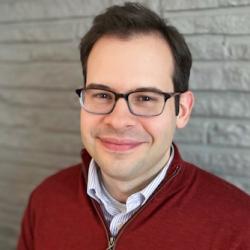Next Thursday, ACEEE will release the 2019 City Clean Energy Scorecard, our most robust report ever to track city progress toward climate goals. While this is our fourth city scorecard, it is the first to assess cities’ efforts to advance renewable energy in addition to energy efficiency. It also scores more cities — 75 this year, compared to 51 in our last report in 2017 — and it takes a closer look at equity and policy performance.
The results? You’ll find out next week when we dive into the details. We’ll reveal which cities did best, which advanced their clean energy agendas since 2017, and which are on track to meet their climate goals (if they have them). Before we wonk out though, we want to take a step back and share stories of people working to increase energy efficiency and spur renewable energy use in some of the cities we assess.
We reached out to several cities asking them to nominate individuals or organizations to spotlight for their work to reduce greenhouse gas emissions. We were overwhelmed with the response. Below we share stories from Denver, San Francisco, Hartford, and New York. They tell inspiring stories of organizations — and people — working every day to make their communities stronger, healthier, and more resilient.
Maceo May Veterans Apartments in San Francisco
This new construction project will provide 105 apartments to low-income and formerly homeless veterans and their families. Joanna Ladd of the Chinatown Community Development Center in San Francisco says Maceo May is one of two new buildings that her organization and Swords to Plowshares are currently developing to house 30-50% of the city’s homeless veterans.
“We are always trying to push the envelope on energy efficiency in our buildings, because we own and operate them in perpetuity, and efficiency is our best insurance against rising utility rates,” says Ladd. “We are excited that the building will be receiving 100% renewable electricity from the San Francisco Public Utilities Commission and are taking full advantage by designing an all-electric building, supplemented with on-site photovoltaics, with no gas-powered building systems.”
Ladd adds, “With Maceo May, we also wanted to be sensitive about burdening our maintenance staff with overly complex building systems, since the maintenance of complex systems creates long-term costs as well. We settled on investing in a high-performance building envelope, with energy recovery ventilators providing tempered fresh air to each unit, to reduce the need for heating."
Hartford Area Habitat for Humanity
The Hartford Area chapter of Habitat for Humanity is doing its part to build more sustainable homes in Connecticut’s capital city. To better understand its work, we interviewed the group’s executive director, Karraine Moody. She explains: “Thanks to energy efficiency expertise, our volunteers, and other partners, we achieved our goal of creating a more affordable housing option for the Hartford community. We are the first Habitat organization in Connecticut to build a Zero Energy Ready Home.”
Moody says an affordable, efficient home is critical for homeowners. “In most cases, they are moving from apartments in need of much repair, saddled with a non-performing furnace along with appliances that lack ENERGY STAR ratings. We have a workshop that focuses on…how to maintain their ENERGY STAR home. There is the a-ha moment in the workshop when they realize that the thermostat can be programmed to align with your daily routine and the gas bill should never reach $200 in any month.”
The Habitat chapter will continue to build ENERGY STAR housing and plans to apply the lessons learned from its Zero Energy Ready Home to a development of six to eight homes.
Solar One in New York City
Cities are also working hard to spur renewable energy. To learn more about these efforts, we spoke to Noah Ginsburg, co-program director of Solar One in New York City, which has worked with more than 200 affordable housing projects to install solar.
“What I love about my work at Solar One is that it really is about the mission: we want to make sure that our transition to clean energy benefits everyone, all New Yorkers, regardless of their income, building type, or neighborhood,” says Ginsburg. “We view this work as dual impact; we want to bring the benefits of clean energy and utility savings to these communities, but it’s also about affordable housing preservation. New York City has a housing crisis, and if we can reduce operating expenses, it can have a huge impact and help blunt some of the larger market forces that are driving displacement and gentrification.”
Ginsburg notes that the city and the state of New York are passing ambitious clean energy goals, legislation, and policies, and that’s critical. “We absolutely need that,” he adds. “We feel really grateful to have a city and state that are committed to that mission and to positioning us to have success with our goals.”
Kate Doughty conducted the interviews referenced in this post.





